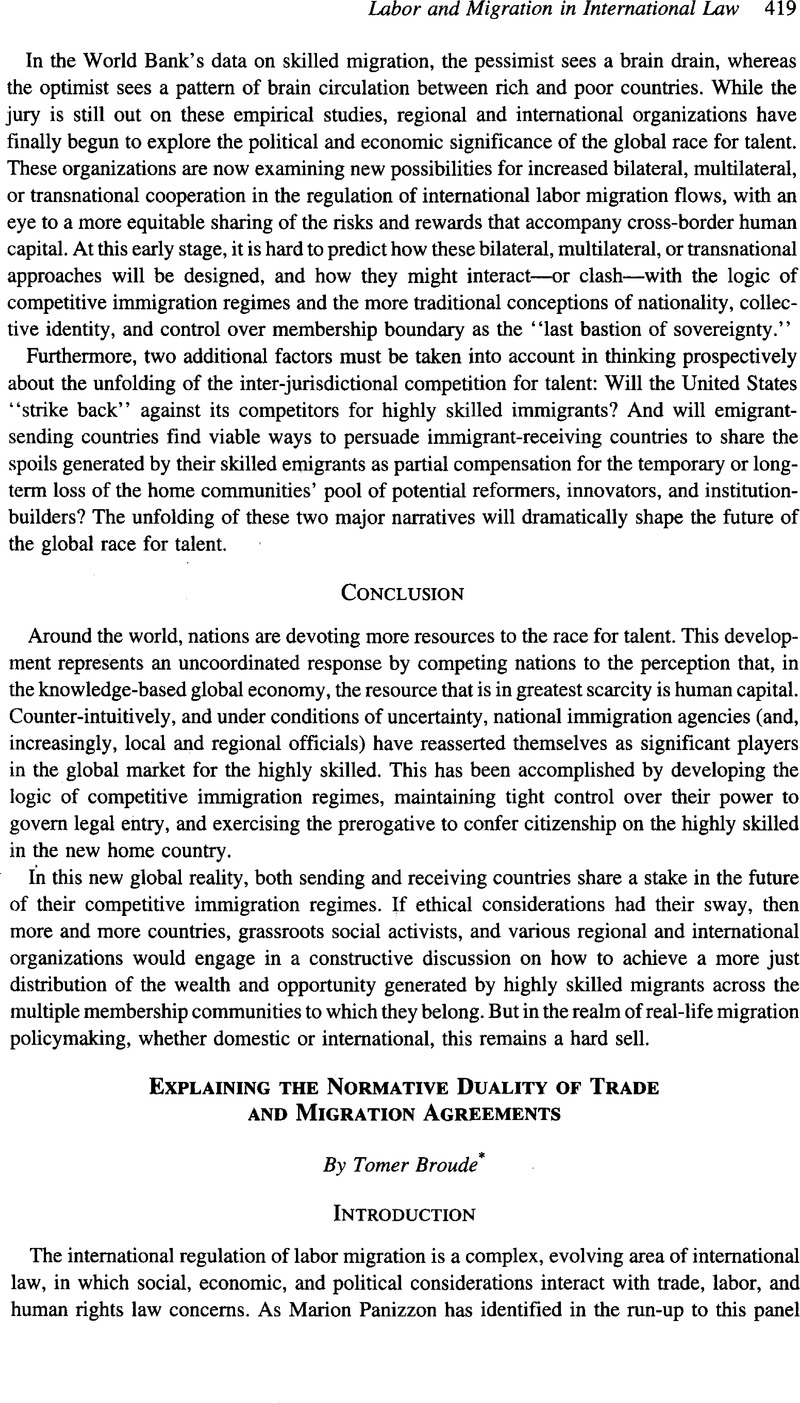No CrossRef data available.
Article contents
Explaining the Normative Duality of Trade and Migration Agreements
Published online by Cambridge University Press: 28 February 2017
Abstract

- Type
- Labor and Migration in International Law: Challenges of Protection, Specialization, and Bilateralism
- Information
- Copyright
- Copyright © American Society of International Law 2011
References
1 Panizzon, Marion, Trade and Labor Migration: Gats Mode 4 and Migration Agreements (Dialogue on Globaliza tion, Occasional Paper No. 47, Jan. 2010)Google Scholar.
2 See General Agreement on Trade in Services, Apr. 15, 1994, Marrakesh Agreement Establishing the World Trade Organization, Annex 1B, Legal Instruments—Results of the Uruguay Round, 31 I.L.M. 1167 (1994).
3 Or in similarly designed migration clauses in bilateral or regional trade agreements. See, e.g., Poot, Jacque & Strutt, Anna, International Trade Agreements and International Migration, 33 World Econ. 1923 (2010)CrossRefGoogle Scholar.
4 See Tomer Broude, Political, Social and Legal Obstacles to Labor Immigration from Developing Countries: The Case of Austria (paper presented at the annual meeting of the International Studies Association, San Diego, Cal., Mar. 22, 2006, available at http://www.allacademic.com/meta/pl00260_index.html).
5 See Broude, Tomer, The WTO/Gats Mode 4, International Labor Migration Regimes and Global Justice, in Cosmopolitanism in Context: Perspectives from International Law and Political Theory 75–105 (Pierik, Roland & Werner, Wouter eds., 2010)CrossRefGoogle Scholar.
6 Benvenisti, Eyal & Downs, George W., The Empire’s New Clothes: Political Economy and the Fragmentation of International Law, 60 Stan. L. Rev. 595 (2007)Google Scholar (emphasis added).




